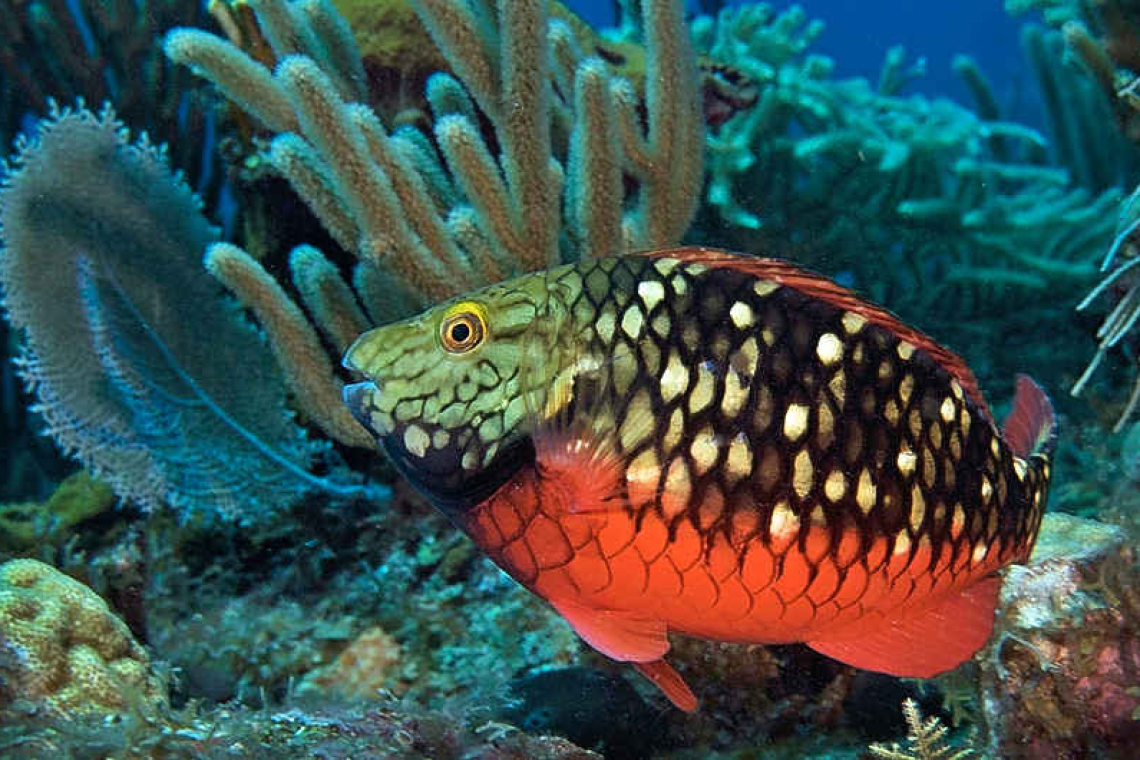Parrotfish. Photo credit: Marion Haarsma.
From The Dutch Caribbean Nature Alliance
The Protocol for Specially Protected Areas and Wildlife (SPAW Protocol), an integral component of the Cartagena Convention, stands as a crucial framework dedicated to safeguarding the biodiversity within the Wider Caribbean region. Recent announcements within the SPAW Protocol have extended extra protection to six species, nominated by the Kingdom of the Netherlands and the Republic of France, marking a significant step towards conservation efforts.
SPAW Protocol
The Cartagena Convention serves as a regional framework aimed at preserving biodiversity in the Wider Caribbean Region. Parties to the Convention, including Aruba, Curaçao, Sint Maarten, the Netherlands (as well as the Caribbean Netherlands islands of Bonaire, Sint Eustatius, and Saba), are committed to upholding the SPAW Protocol, a pivotal regional legal agreement.
The SPAW Protocol classifies species into Annexes I, II, and III. Annexes I and II encompass endangered or threatened plant and animal species, mandating the highest level of protection, while Annex III includes species requiring protective measures, albeit not as strict as the first two annexes.
This classification system is integral in guiding conservation efforts. Annex I and II species benefit from comprehensive protection, prohibiting commercial trade and the destruction or killing of these species, as well as the responsibility to adopt measure to ensure the recovery of these species. Annex III species are subject to regulated measures with the aim of recovering the threatened and endangered species.
Species
Four species were added to Annex II: the Giant Manta Ray, the Lesser Antillean Iguana, the Oceanic Whitetip Shark, and the Whaleshark. This new status means it’s a no-go for taking, possessing, killing, or trading these species and their products. The new inclusion on Annex III includes the Caribbean reef shark and the parrotfish as a species group. Annex III, while not as restrictive, still calls for measures to ensure the protection and recovery of listed species. Furthermore, updates have been made to the Marine Mammal Action Plan for the Conservation of Marine Mammals in the Wider Caribbean region. This was decided at the last Conference of the parties for the Cartagena Convention (COPS) in October on Aruba.
Additionally, check local rules and regulations with the respective Protected Area Management Organization or local Government. For example, on Aruba and Bonaire, it is prohibited to catch, kill, wound, or disturb parrotfish. Also, all shark species are fully protected in Dutch Caribbean’s Yarari Marine Mammal and Shark Sanctuary.
Securing a sustainable future
The Dutch Caribbean’s involvement in the SPAW Protocol offers benefits that include strengthened conservation efforts, international collaboration, improved resource management, and compliance with international commitments, contributing to the region’s sustainable development and ecological resilience.
DCNA
The Dutch Caribbean Nature Alliance (DCNA) supports (science) communication and outreach in the Dutch Caribbean region by making nature related scientific information more widely available through amongst others the Dutch Caribbean Biodiversity Database, DCNA’s news platform BioNews and through the press. DCNA is not liable for the content and the (in-direct) impacts resulting from publishing this article.







